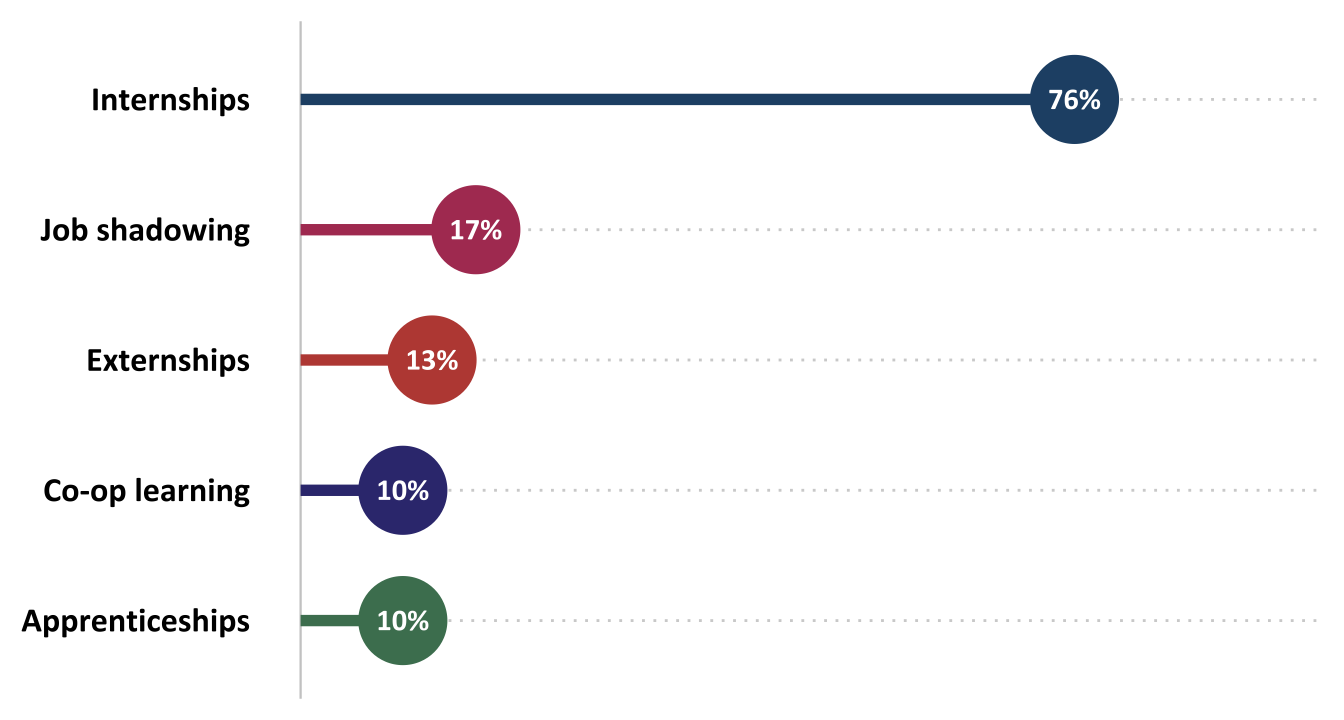
Chapter 5 Workplace-Based Learning
5.0.0.0.1 Workplace-based learning includes any situation in which a student gains experience at a work site, such as through internships, apprenticeships, co-op learning, and job shadowing. Research indicates that such experiences contribute to students’ confidence in their abilities and enhance employability skills, such as problem-solving, communication, and professionalism (Jackson, 2014).
5.0.0.0.2 ATE PIs whose projects offered workplace-based learning were asked about key characteristics of the workplace-based learning opportunities they offered and about the number of students who participated in these activities in 2023.
5.1 Workplace-Based Learning
5.1.0.1 Twenty-two percent of ATE projects provided workplace-based learning opportunities for students.
In 2023, 2,350 students participated in workplace-based learning opportunities offered by 70 ATE projects. An additional 11 ATE projects reported offering field trips to business and industry sites. The 22% of projects that provided workplace-based learning in 2020 excludes the 11 projects that only reported offering field trips.
5.1.0.1.1 Most ATE projects offered workplace-based learning through internships and apprenticeships.

Figure 5.1: Percentage of ATE projects that offered each type of workplace-based learning (n=70)
The median number of weekly hours that students spent in a workplace-based learning activity ranged from 4 to 40, and the median number of weeks spent in an activity ranged from 4 (job shadowing) to 52 (apprenticeships).
Respondents discussed a variety of benefits to both students and employers. As one respondent noted:
“The students improve their scientific communication skills and gain confidence in communicating the work that they are doing… In addition, the students learn what it takes to be successful in an industry… Finally, networking with other people in the industry is very important as many times this leads to employment in the field.”
Survey respondents reported on the characteristics of the workplace-based learning their projects offered. The table shows variation both within and across activities.
| Internships (n=53) | Job Shadowing (n=11) | Externships (n=9) | |
|---|---|---|---|
| Required by program | 53% | 36% | 33% |
| Academic credit | 62% | 18% | 56% |
| Coupled with a course | 43% | 36% | 56% |
| Received payment | 87% | 27% | 67% |